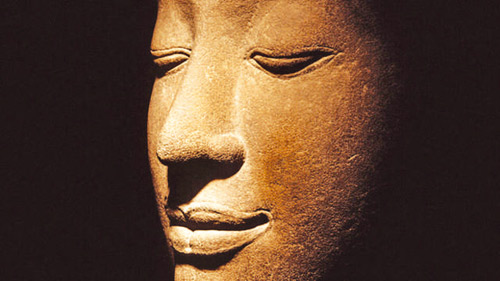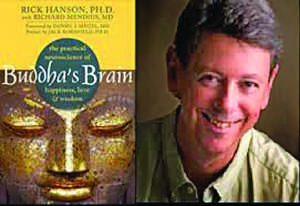Buddha’s Brain by Rick Hanson and Mendius delves into neuroscience and Buddhist teachings and shows how you can shape your brain for happiness, love and wisdom

Intrigued by its title, if you were hoping for a virtual forensic dissection of the actual brain of the Buddha, you would be disappointed by Buddha’s Brain. Without trying to proselytise, the authors blend Buddhist teachings and neuroscience to explore the roots of suffering and the path to emotional liberation.
Though the book acknowledges the transcendental, it stays within the framework of science. The authors expound how our bodies are geared to respond to the joys and setbacks that come our way. For instance, the neurotransmitter dopamine is linked to rewards, so levels can surge when things go our way. But if our expectations are not met, dopamine levels drop, causing unpleasant feelings or even cravings for positive experiences. Practicing compassion, they argue, is one of the most reliable ways to free ourselves from the inevitable hurts and disappointments of life. Dopamine and other neurochemicals can be generated by thinking of those we love, or, as the authors encourage, to help us love even those we hate.
 Buddha’s Brain is divided into four parts: the causes of suffering, happiness, love, and wisdom.
Buddha’s Brain is divided into four parts: the causes of suffering, happiness, love, and wisdom.
Part one explains how meditation changes our brain in numerous ways, including: It adds billions of synaptic connections – and thus, a measurable thickening of brain tissues – in the regions handling control of attention and sensory awareness.
Chapter two talks about how stress and reactivity build up in “implicit memory” of the brain and cast a shadow over mood and outlook and darken one’s “interior landscape”. Hanson links it to Buddhist philosophy: Negative thought saps bhavana– the cultivation of wholesome qualities – by downplaying good lessons and experiences, and by making it harder to recollect positive states of mind. We can overcome it by creating positive experiences like showing generosity, evoking compassion, or recalling a happy time.
Chapter three introduces the first and second darts. First darts are emotional sufferings that are direct result of pain (physical or psychological). Second darts are the ones we throw at ourselves as we consciously respond to first darts like getting angry at the person who accidentally spilt the coffee. We could substantially reduce our suffering if we stopped doing this, Hanson suggests.
Chapter four espouses the benefits of embracing the good things that happen to us every day so as to strengthen the neural networks that support happiness. Chapter five encourages readers to practice going to their mental sanctuary so as to relax and feel safe. Hanson argues that seeking sanctuary in this way will reduce our over-reaction to threats, thereby lowering our stress levels and enabling our positive peaceful emotions to flourish. Chapter six explains the virtues of feeling mentally strong, including having the strength to see our intentions through. Chapter seven discusses the state of equanimity – having a calm that can engage with passing thoughts and emotions without getting attached to them.
Chapter eight reminds us to try and love rather than hate others by counting them as one of ‘us’, rather than one of ‘them’. Chapter nine stresses the importance of being compassionate while still being assertive about your opinion.
The final part of Buddha’s brain is on wisdom and contains some advice of mixed efficacy to achieve this; one tip recommends simply telling yourself “May my mind be steady”. Chapter thirteen advises us to relax ‘the self’ which the reader may find elusive.
Hanson recommends having the strength to see our intentions through (which requires taking ourselves seriously), while also encouraging us to give up thinking of our self. Another conflict is in chapter ten, where the notion of karmic rebirth (if we live morally, we come back as something better in the next life and vice versa) is used to justify why we don’t have to be angry at or punish those who have wronged us. This sort of advice would be okay in a self-help book but hardly in a book claiming to be based on neuroscience.
In sum, Buddha’s brain offers credible insights into certain Buddhist practices that can make our life happier and more meaningful.
Rick Hanson, Ph.D., is a neuropsychologist and New York Times best-selling author. His books include Hardwiring Happiness, Buddha’s Brain, Just One Thing and Mother Nurture. On the Advisory Board of the Greater Good Science Centre at UC Berkeley, he’s been an invited speaker at Oxford, Stanford, and Harvard, and taught in meditation centres worldwide.
– Source : www.thedailystar.net




